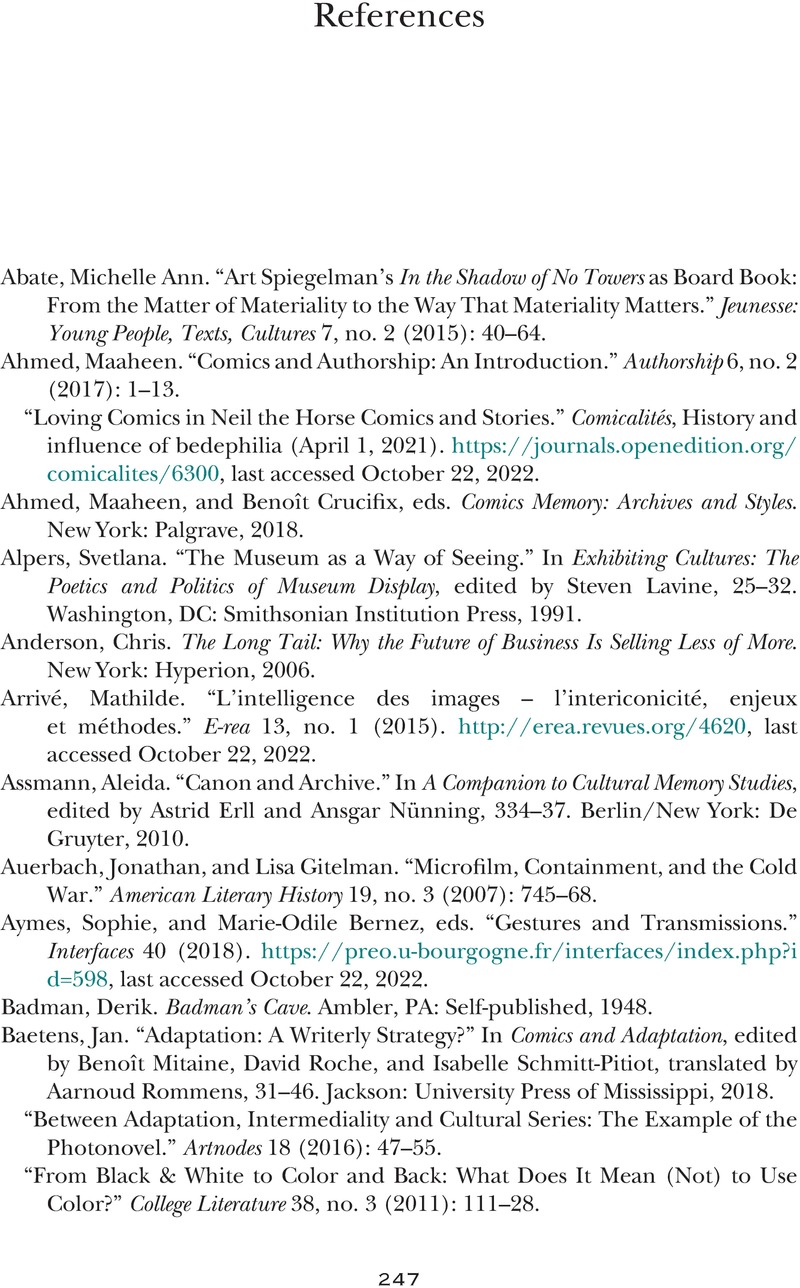Book contents
- Drawing from the Archives
- Cambridge Studies in Graphic Narratives
- Drawing from the Archives
- Copyright page
- Dedication
- Contents
- Figures
- Acknowledgments
- Introduction
- Chapter 1 Collecting
- Chapter 2 Curating
- Chapter 3 Reprinting
- Chapter 4 Forging
- Chapter 5 Swiping
- Chapter 6 Undrawing
- Conclusion
- Notes
- References
- Index
- References
References
Published online by Cambridge University Press: 06 July 2023
- Drawing from the Archives
- Cambridge Studies in Graphic Narratives
- Drawing from the Archives
- Copyright page
- Dedication
- Contents
- Figures
- Acknowledgments
- Introduction
- Chapter 1 Collecting
- Chapter 2 Curating
- Chapter 3 Reprinting
- Chapter 4 Forging
- Chapter 5 Swiping
- Chapter 6 Undrawing
- Conclusion
- Notes
- References
- Index
- References
Summary

Information
- Type
- Chapter
- Information
- Drawing from the ArchivesComics Memory in the Contemporary Graphic Novel, pp. 247 - 267Publisher: Cambridge University PressPrint publication year: 2023
